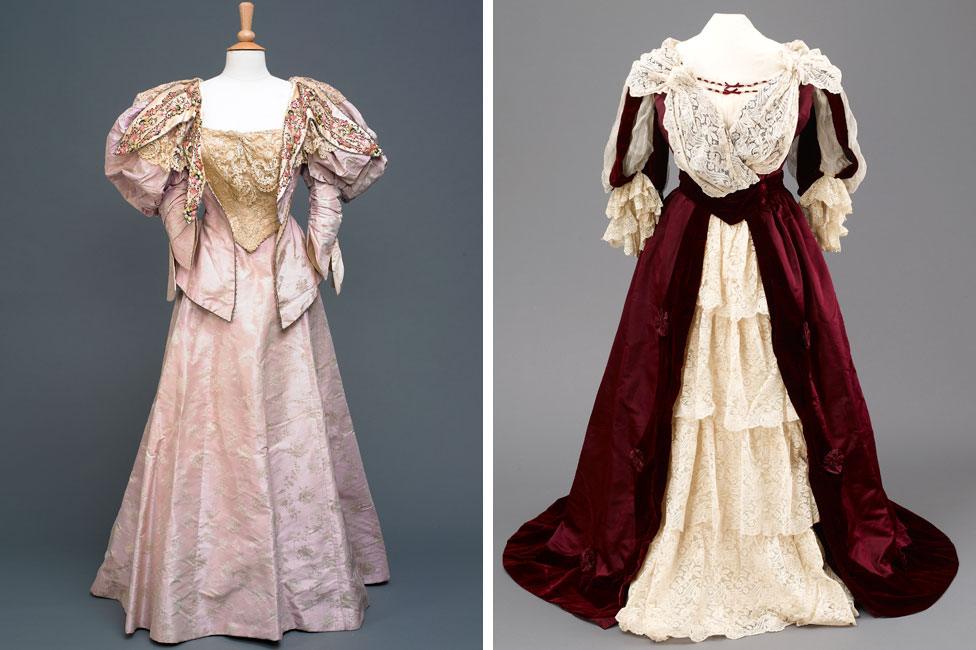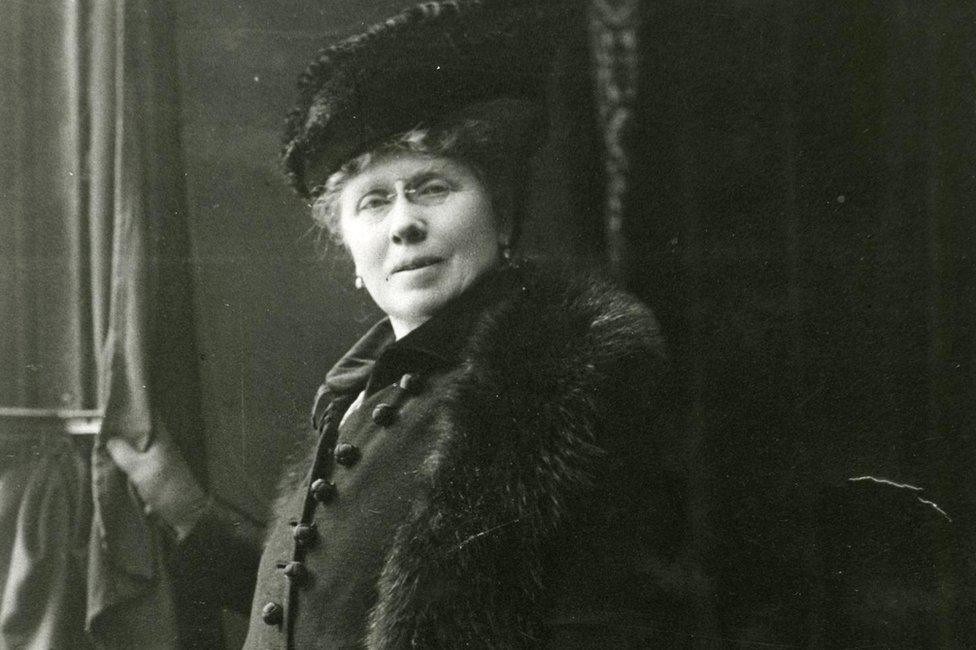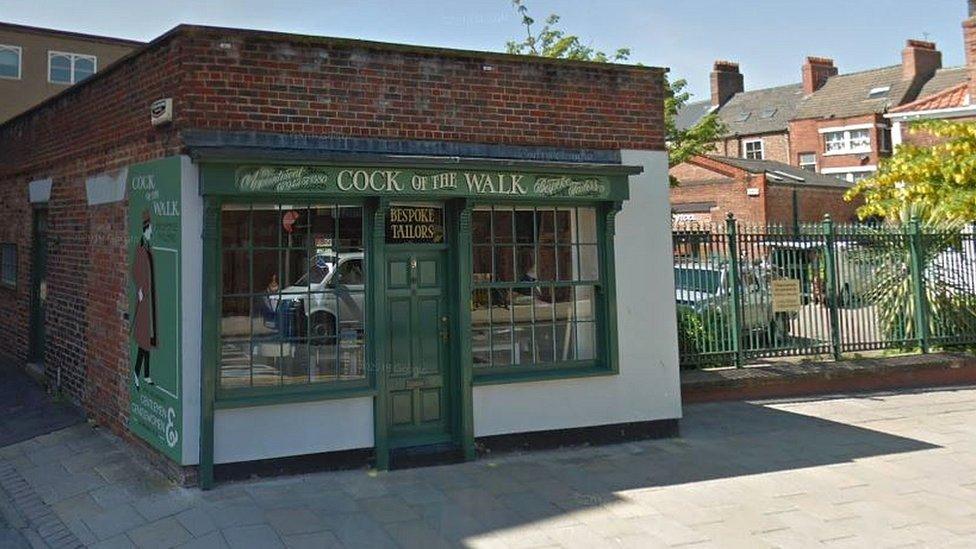Madame Clapham: Hull's trailblazing dressmaker inspires new generation
- Published

Intricate ball gowns - the height of Victorian fashion - were made by Madame Clapham's firm in 1896 and 1897
When you think of haute couture Savile Row, Paris or Milan might spring to mind, but Hull? Despite its absence on most lists of fashion hotspots it was once home to a royal dressmaker whose designs were coveted by high society. Her legacy has inspired others to set up shop in the city and could yet see it back on the UK's fashion map.
For 80 years, Hull was home to the salon of Madame Clapham - a redoubtable woman who turned her business in the Yorkshire port into a thriving clothing manufacturer.
From a humble start in 1887, she built her firm into an impressive outfit which employed 150 workers by 1914.
Her work gained such renown that she was appointed as a royal dressmaker, and her garments became objects of desire among those in high society.
Madame Clapham's reputation soared between 1890 and the outbreak of World War One in 1914. It was an era of strict dress codes for high-society events like balls, dinner parties, promenading or race meetings.
Her intricate designs - such as a turn-of-the-century ball gown with a silk brocade and a bodice decorated with satin, sequins, pearl beads and silver thread - were the height of Victorian and later Edwardian fashion.
As well as clothing royalty, including the Queen of Norway and various princesses, Madame Clapham received many orders from young women due to be presented at court during the "coming out" season.
Her pride in her royal connections was such that she emblazoned the firm's headed note paper with the words Court Dressmaker.
Despite her hard-won reputation and demand from London's movers and shakers, she resisted the temptation to move and her firm remained in Hull until its closure in 1967.

Most of the salon's staff were female and this group was photographed in 1908
Hull Museums curator Lauren Field said Madame Clapham's rule over the business and her staff was strict and the hours long by modern standards.
She disdained advertising as "crass" and her salon relied on word-of-mouth among the well-heeled to attract customers, said Ms Field.
A move to the capital would have furthered Madame Clapham's work and clientele, said Ms Field, "but she never left Hull, just expanded".
"It was a massive thing for the city, she was a big employer and the majority of her staff were female, working as dressmakers in various departments or as models.
"One thing is for sure she didn't do things by half," she added.

Susan Capes, Assistant Curator said: "Madame Clapham put Hull firmly at the forefront of the fashion industry and her legacy can still be seen in our museum"
The redoubtable Madame Clapham
Born 1856 in Cheltenham, she moved north for a dressmaking apprenticeship at a Scarborough firm
In 1887 she and her husband Haigh Clapham purchased Number 1 Kingston Square, Hull to open their own salon
By 1891 the business had expanded to an adjoining property
In 1901 she added Court Dressmaker to salon labels
She made dresses for Princess Daisy of Pless (modern-day Poland)
And Queen Maud of Norway (Edward VII's daughter) in 1905
By 1912 owned numbers 1, 2 and 3 in fashionable Kingston Square
She died in 1952, aged 96, at her large home in Cottingham, East Yorkshire
Her niece Emily Wall took over the business, until it closed in 1967
Source: Hull Museums

The fully bespoke tailoring business in Hull is one of about only 10 outside London, according to Ms Field
Gillian Long, a Savile Row-trained master tailor is the owner of Cock of the Walk, just round the corner from Madame Clapham's former premises.
She is continuing Hull's bespoke sewing tradition, and runs one of the few businesses of its kind outside London.
"Seeing Hull is quite an unfashionable area and, some people think, at the end of nowhere, we still get people coming to us from worldwide," Ms Long said.
She said she was "in awe" of Madame Clapham's ability to sustain the level of work she achieved.
"It wouldn't have been easy, especially selling so many women's clothes, but I think it was wonderful," she said.
In marked contrast to her predecessor's outfit Ms Long employs just eight staff, but one thing remains the same.
"A lot of our staff are women, they can do nimble work with smaller hands," she said.
And, in another echo of the woman who blazed a trail for dressmaking in the city, she has no plans to leave Hull any time soon.
"There is such good light, it has natural light in abundance and rents are cheap for a city centre location, that's why it is such a good place for our tailoring," she said.

Follow BBC East Yorkshire and Lincolnshire on Facebook, external, Twitter, external, and Instagram, external. Send your story ideas to yorkslincs.news@bbc.co.uk, external.